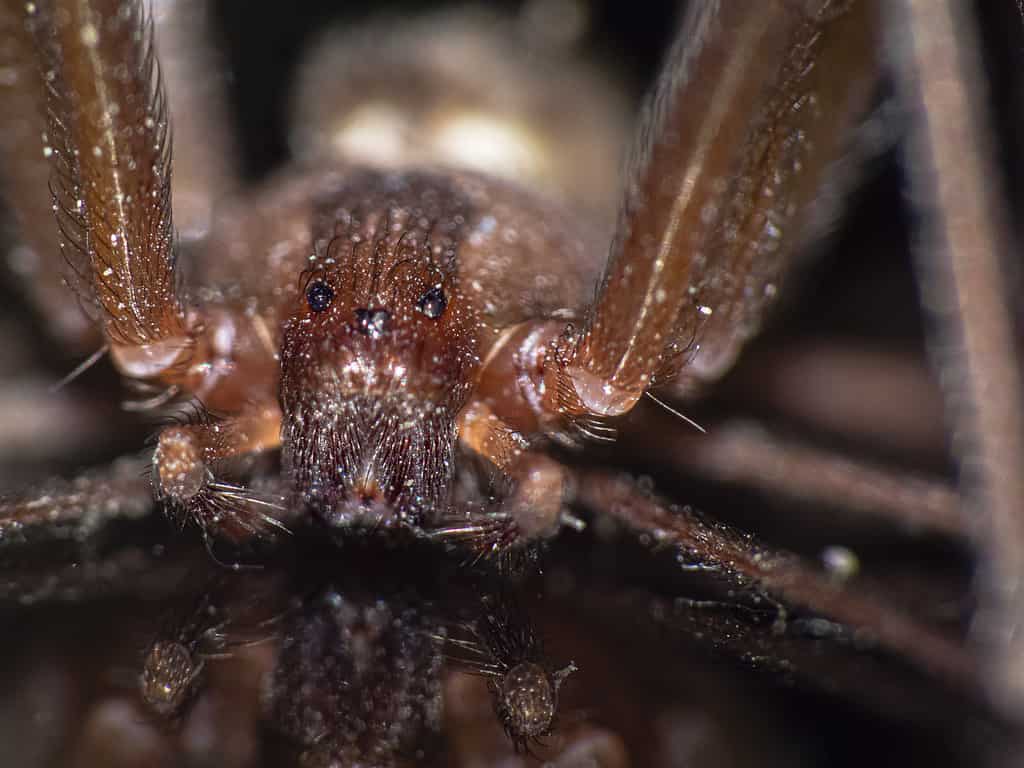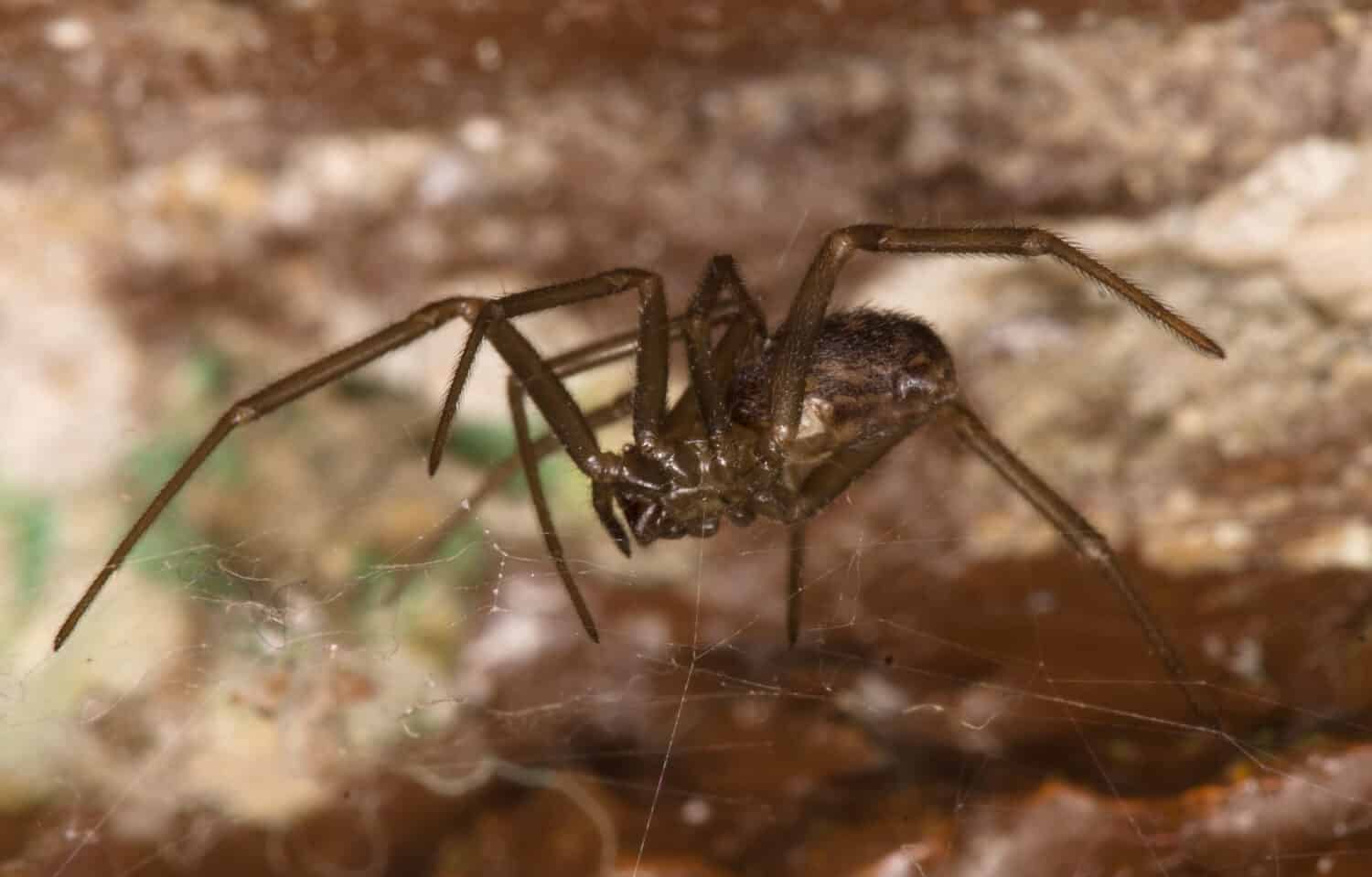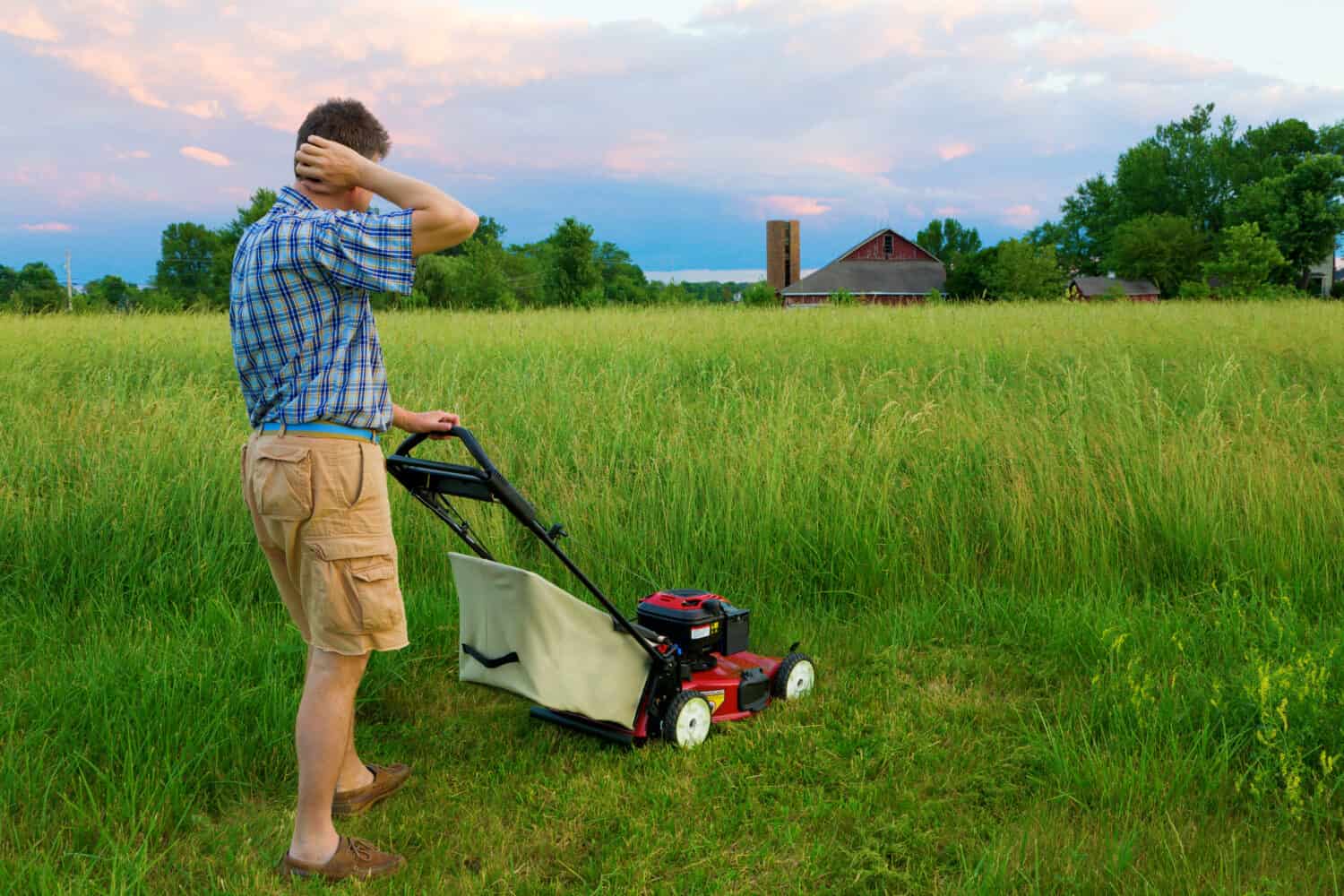Are you dealing with brown recluse spiders and searching for ways to eliminate them from your home? It can be quite an unnerving experience. Know that you’re not alone. These spiders frequently invade homes across different regions of the country, and people understandably dread encountering them, particularly inside their houses. The bite of a brown recluse spider can be fatal for pets, children, or individuals with weak immune systems.
The National Capital Poison Center data does indicate that severe illnesses and death from brown recluse bites are rare. However, that doesn’t mean recluse bites are not dangerous. The venom from the bites causes injury and death of tissues surrounding the bite area.
What makes the situation more scary is that there is no antidote! Medical intervention is necessary to help reduce the spread of venom and the damage caused by it. Having said this, you would now fully comprehend how important it is to eliminate brown recluse spiders from your home. Read on to learn how.
What are Brown Recluse Spiders?
The brown recluse spider (Loxosceles reclusa) is a tiny brown spider with necrotic venom. It is classified with black widow and Chilean recluse as the only spiders in North America with medically significant venom. The spiders range in size from 0.24-0.79 inches but can grow bigger.
Brown recluses are brown (hence their names) and can range from medium to light. Other color variations include whitish brown, dark brown, and blackish gray, meaning that brown cannot be the only way to identify them. They are also referred to as violin spiders or fiddle-back spiders. This is due to a distinctive dark violin-shaped marking on their cephalothorax.
The legs are usually long, slender, and darker than the body. The brown recluse has six eyes arranged in pairs (unlike most spiders with four pairs of eyes). The spider is nocturnal, meaning it’s active at night.
Brown recluses can survive for months without food. They prefer to lay low under woodpiles, boxes, and concrete blocks. The spiders will likely hide under furniture, in cardboard boxes, and the garage if they enter your home. They feed on insects like mosquitoes and flies, but unlike other spiders that prefer to trap insects in their web, brown recluses hunt their prey.

Brown recluse spider, a venomous arachnid known for its distinctive violin-shaped marking on its back.
©Physics_joe/Shutterstock.com
Where are Brown Recluse Spiders Found?
Brown recluse spiders are found in Oklahoma, Texas, Louisiana, Kansas, Missouri, Alabama, Mississippi, and parts of Ohio, Kentucky, Tennessee, Georgia, Indiana, Nebraska, and Ohio. Data from Vetter indicates these spiders don’t live outside the above areas, particularly not in California. There were reports of people spotting brown recluse spiders in California, but research established that those were other species of the Loxosceles.
Brown recluses prefer to inhibit dead tree barks, wood piles, boards, and gaps under rocks. They can also live inside wall cracks, under debris, furniture, and in items in storage. For instance, if you left your boots in the garage for some time, it’s possible to find a brown recluse inside.
Do Brown Recluses Attack People?
Brown recluse spiders are known for their non-aggressive nature. In fact, they can establish residency within your home without you even noticing, as they tend to remain hidden and avoid human contact. Their presence may only become apparent when they accidentally come into view while searching for prey.
These spiders prefer secluded hiding spots that are hard to access and typically emerge during nighttime for hunting purposes. However, it’s important to note that they may bite if they feel threatened, such as when you unknowingly encounter them in a shoe they have been using as a hiding place.
Brown recluse spiders have tiny teeth that can’t even penetrate clothing. The bite usually goes unnoticed at first because it’s painless. However, the creature is venomous, resulting in mild to moderate symptoms, including itchiness, chills, fever, sweating, and nausea.
The bite area usually becomes itchy and painful within 2 to 8 hours after being bitten. The venom causes injury and death of tissues around the bite area. Furthermore, the toxin can also damage deeper tissues in extreme cases, but it is rare.

A brown recluse spider, with its venomous bite, poses a significant threat to human health.
©iStock.com/Wirestock
How to Treat Brown Recluse Spider Bite
Data from Poison.org indicate there is no antidote for brown recluse spider venom. A possible reason for lacking an antidote is that many cases go unnoticed, and people avoid seeking medical assistance. In the event of a bite, receiving adequate treatment will depend on your unique symptoms.
The following steps can help ensure timely care:
- Wash the bite area with water and soap.
- Don’t scratch or touch the bite area to avoid spreading the venom (the area might be very itchy).
- Put on a nonstick bandage.
- Your doctor can prescribe antihistamines if the site is very itchy.
- You may need antibiotics to prevent and treat the infection.
- Should you get a severe wound, your doctor might advise surgical intervention.
- Get tetanus vaccination if you are not up to date.
Signs of Brown Recluse Infestation
As mentioned, brown recluse spiders are adept at maintaining a discreet presence. Should you overlook one in your home, the chances of an infestation are high because these spiders have a high reproduction rate. A female brown recluse lays up to five egg sacs, each having 40-50 eggs. Brown recluse spiderlings will take 10 to 12 months to reach maturity and lay their eggs, and the cycle continues.
How can you tell that you have a brown recluse infestation in your home?
1. Sighting a Brown Recluse Spider
Brown recluse spiders have a diet of small insects like mosquitoes and flies. If you have a lot of insects in your home, it becomes easier to spot these spiders actively hunting. While naturally reclusive, preferring to avoid human contact, note that they tend to live in groups or clusters. This only means that if you spot one brown recluse spider, there is a high chance of many hiding nearby.

If you spot one brown recluse spider in your home there is a high chance of many hiding nearby.
©Krezodent/Shutterstock.com
2. Spider Web in Crevices and Corners
The most apparent sign of spiders in your house is webs attached to the wall and hidden corners. The webs are usually sticky to help trap insects. Brown recluses don’t build webs in isolated areas; you will likely find them throughout the house.
3. Spotting Egg Sacs
Brown recluse egg sacs are either silken cream or off-white and help to protect the eggs from predators. The sacs are usually 2-3 inches in diameter. Spiderlings take about a month to hatch; you will have more spiders by then.
4. Decreased Flying Insects
Brown recluses are hunters that prey and feed on insects like flies, mosquitoes, and termites. If you had insects flying around and without any intervention, they vanish or decrease, a spider in your home might have captured them.
5. Sign of Paralysis or Kidney Failure in Your Dog
The venom of brown recluse spiders can be extremely dangerous for pets, especially puppies. If multiple spiders have bitten your puppy, it can have severe consequences such as paralysis or kidney failure. Watch out for symptoms such as walking with the front feet while dragging the back legs, experiencing pain in the neck and spine, and being unable to urinate. These signs indicate a potential reaction to the venom and should be taken seriously.
It is crucial to seek immediate veterinary attention if you suspect a brown recluse spider bite on your puppy to ensure their well-being and appropriate treatment.

Brown recluse spider bites in dogs can lead to kidney failure, a potentially severe and life-threatening condition.
©Kittima05/Shutterstock.com
How to Get Rid of Brown Recluse Spiders
For the safety of your family and pets, you should exterminate any brown recluse spiders from your home. However, you should figure out why they find your house appealing, as this may help you address the root cause.
Below are reasons why brown recluses could find your home habitable:
- Too many insects – Brown recluses feed on insects and move to areas with food. Their presence in your house tells you that there are more insects to worry about.
- Dark, isolated areas in your house – These spiders prefer warm dark spaces. Places like cupboard corners, wall crevices, bed skirts, and attic space are perfect for them to thrive.
- Unkempt vegetation near your home – Overgrowth of weeds, grass, and bushes can also attract brown recluses. Such areas provide ideal living space and food.
- Woodpile, debris, or trash in the backyard – An untidy yard can attract brown recluse spiders and other dangerous creatures, including snakes.
Now that you know why you might have brown recluses in your house, it’s time to remove them, and there are various methods. Some techniques might be effective if used together.
1. Place Eucalyptus Around Your Home
Brown recluse spiders hate the smell of eucalyptus and will move far away to avoid the smell. If no one in your home is allergic to the eucalyptus smell, putting the springs inside will drive the spiders out.
2. Glue Traps
You must first identify where the spiders are hiding to succeed with this method. Place the traps close to the web and any other place they might frequent, such as the basement, around the windows, and along ledges. When the spiders walk across the trap, their legs are trapped, and they will die of dehydration.
While this method can kill spiders, it might take a long time and require many traps. Also, remember to keep the traps away from toddlers and pets.
3. Apple Cider Vinegar
Vinegar is a typical homemade solution to control many types of bugs. Mix equal water and vinegar in a bottle, then a teaspoon of dishwashing soap, and spray areas where the spiders hide. You’ll need to squirt several times to kill all the spiders.
4. Diatomaceous Earth
Diatomaceous earth absorbs fats and oils from the exoskeleton’s cuticle, making the spider dry out and die. Spread the powder on the surface the spiders will likely walk on. The powder is not dangerous for humans and pets but should be incorporated with other methods, like offering bait, as the spider has to walk over it for the technique to work.
5. Essential Oils
If you don’t want to kill the spiders, repelling them away from your home is the way to go. Like other spiders, brown recluses hate strong smells. Mix several drops of essential oils with water and spray all dark corners and crevices on their web. Ensure not to spray in areas with pets, as essential oils can harm pets, especially when ingested.
6. Pesticides
Consider using a pesticide if the above methods are ineffective or if you prefer a quicker solution. Remember that pesticides kill spiders and do not just repel them. If repelling is your goal, some of the above-mentioned methods will suffice. However, if you don’t mind killing them, consider using pesticides with ingredients like deltamethrin, cyfluthrin, and lambda-cyhalothrin.
You should spray the spiders’ hideout, web, and eggs to ensure the eggs don’t hatch. However, spraying pesticides in the yard might kill more insects than intended. For instance, spraying flowers will kill bees. That’s why following directions on the package concerning measurement and application is vital. Also, avoid spraying in areas near people since pesticides can also be dangerous to humans and animals.
7. Seek Professional Removal
Using the above methods requires you to get your hands dirty. You must identify the spiders’ hideouts and webs to kill them in large numbers. DIY pest removal without the right gear can be risky, and the spiders could bite you.
Hiring a professional will reduce the work and be more effective. Professionals have the knowledge and equipment for effective and risk-free removal, so they will advise you on measures to prevent another infestation.
Prevent Brown Recluse Spiders From Re-entering Your Home
After successfully removing brown recluse spiders from your home, ensuring they don’t return is crucial. Some of the methods listed below are effective against other pests.
1. Minimize outdoor lighting
Bright lights attract insects like flies, battles, and crane flies. Spiders and frogs usually go near the lights to look for food. Therefore, minimizing the lighting will prevent insects and, ultimately, brown recluse spiders and other small animals that feed on insects.
2. Cut grass and bushes in your yard
As discussed above, long grass and bushes attract insects, and spiders will follow along to look for food.

Regular grass cutting can act as a preventive measure to minimize brown recluse spider infestation.
©Alexey Stiop/Shutterstock.com
3. Plant eucalyptus to repel spiders
Spiders hate strong smells. Planting strong-scented plants can deter spiders from your surroundings.
4. Clean your home
A dirty home attracts insects and bugs, and brown recluse spiders are no exception. Keep the house clean by removing food leftovers and residues, disposing of trash, and regularly cleaning the dustbin. Clear any debris and remove boxes or wood piles near the house.
5. Seal cracks on the window, doors, and walls
Insects are tiny and usually squeeze themselves in small cracks to get into the house. Sealing the cracks will ensure they don’t get inside.
Deal With Brown Recluse Spiders Once and For All
In conclusion, addressing a brown recluse spider infestation requires a proactive and comprehensive approach. Steps such as decluttering and keeping your home clean, sealing entry points, and using spider repellents can help deter and eliminate these spiders.
It is also essential to exercise caution when handling potential hiding spots and to seek professional assistance if the infestation persists. By implementing these measures and staying vigilant, you can successfully deal with brown recluse spiders once and for all, ensuring a safer and spider-free environment for you and your loved ones.
The photo featured at the top of this post is © Macrolife/Shutterstock.com
Thank you for reading! Have some feedback for us? Contact the AZ Animals editorial team.







